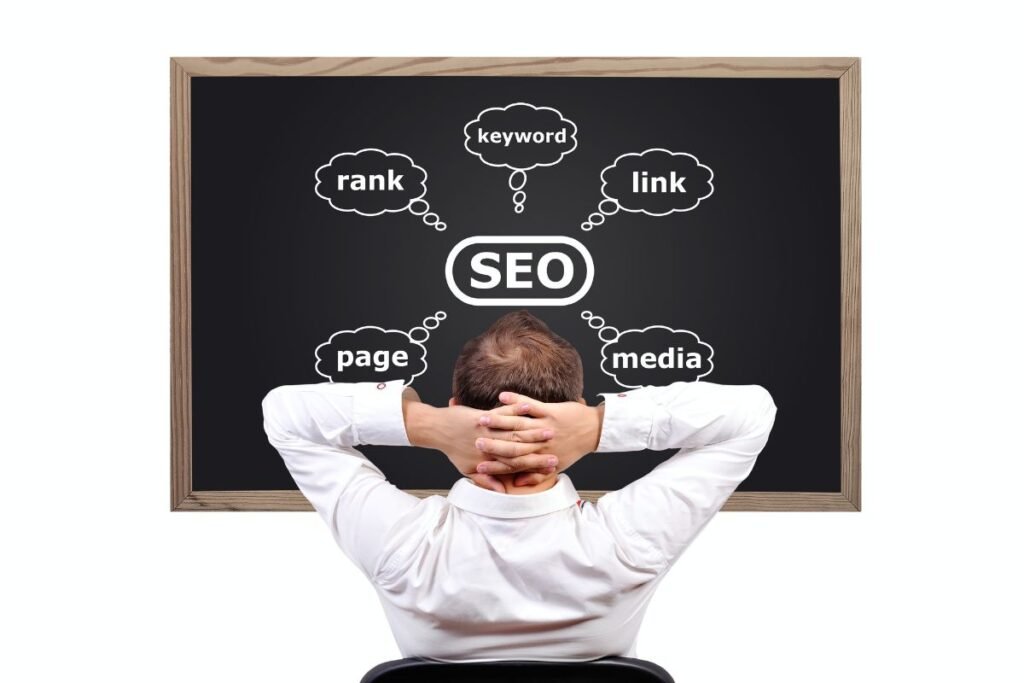On-Page SEO Techniques That Still Work
Effective on-page SEO remains the foundation for website growth in 2025. To succeed, you must combine technical improvements, strategic content, and an understanding of modern ranking factors. Eclipse Marketing helps brands excel by aligning site optimization with modern search intent and proven SEO fundamentals. Staying ahead means knowing exactly which on-page methods drive results now, not just what worked years ago.
Imagine pouring time and money into your site, publishing new blogs, and updating meta tags yet seeing almost no change in rankings or traffic. Frustration builds. You tweak titles, change headings, and even rewrite whole pages. But your results stay stuck. Many site owners hit this wall and feel left behind, watching competitors leapfrog them in Google’s ever-shifting algorithm. It’s a common story: hard work, minimal returns, and mounting doubt about which on-page tactics truly work.
Don’t get lost in outdated tricks or guesswork. This guide reveals the core on-page SEO techniques that consistently deliver strong rankings in today’s search landscape. You’ll learn how to optimize for what Google values most, spot outdated advice, and apply actionable steps with real impact. We’ll also highlight crucial ranking factors and the importance of understanding search intent, two pillars of modern SEO that elevate every on-page strategy.

Laying the Foundation for On-Page SEO
A strong on-page SEO foundation sets the stage for lasting results. It involves more than just keywords; it’s about building pages that search engines trust and users love.
Crafting Effective Meta Elements
Meta titles and descriptions are still essential for on-page SEO. They signal the topic and relevance of your page to both users and search engines. An optimized title tag should include your main keyword near the start, be under 60 characters, and match the searcher’s intent. The meta description acts as a mini-ad, summarizing what visitors will find. Keep it between 145-160 characters and make sure it’s unique for each page. Compelling meta elements can improve click-through rates, helping your content stand out in crowded search results. For instance, using concise language that matches common queries often yields higher engagement . Accurate, well-written metadata is a foundation, not a shortcut, for effective on-page optimization.
Structuring Content for Clarity
Clean structure helps both Google and your readers. Break content into logical sections using H1, H2, and H3 tags. Each header should introduce a new idea, making pages easier to skim and understand. Clear structure helps Google’s crawlers categorize your information. Adding bulleted lists, short paragraphs, and descriptive headings makes content digestible. Remember to include supporting keywords naturally, using related phrases without stuffing. Well-structured articles tend to rank higher because they align with Google’s focus on user experience. Leveraging a robust web design, like the solutions found at Eclipse’s site architecture services, ensures every page layout supports SEO best practices.
Optimizing Visual Content
Visuals can enhance SEO when properly optimized. Always compress images to reduce load times and use descriptive file names. Include alt text for each image, this not only helps with accessibility but also allows search engines to understand image content. Rich visuals (like charts and infographics) keep users engaged and reduce bounce rates, both of which are positive ranking signals. When possible, embed videos to further increase time on page. External research from Moz’s image SEO study demonstrates that properly optimized media can result in higher search visibility and richer snippet opportunities. The best approach is balancing eye-catching visuals with speed and accessibility for users across all devices.

Core On-Page SEO Strategies That Deliver Results
On-page SEO isn’t about guesswork. Proven strategies ensure your site stays competitive as algorithms change. Let’s focus on the core methods you need for lasting impact.
Advanced Keyword Placement
Keyword targeting remains central to SEO, but strategies have evolved. Instead of repeating the same keyword, use synonyms and related terms, these LSI keywords provide context. Place primary keywords in the title, first paragraph, and at least one heading, but always write for real people first. Naturally weave variations into the content, which helps Google understand your page in relation to broader topics. According to Search Engine Journal’s 2025 ranking factors overview, keyword intent and placement carry more weight than sheer frequency. Incorporating advanced keyword placement with semantic relevance boosts your chances of ranking for both short-tail and long-tail searches.
Strategic Internal Linking
Internal links guide users and search engines through your website. Effective linking passes authority to important pages, distributes ranking power, and helps Google understand your site’s structure. Each link should use descriptive, unique anchor text. Avoid repeating the same phrases or overusing exact-match keywords. For example, sending visitors to comprehensive visibility frameworks or highlighting targeted digital campaigns creates a network of context-rich pathways. Research from Ahrefs’ internal linking study found that websites with strong internal linking strategies see faster and more stable ranking growth.
Enhancing User Experience (UX)
Search engines reward pages that deliver a positive user experience. This means fast load times, mobile-friendly layouts, clear navigation, and engaging content. Improving UX reduces bounce rates and increases time on page, both of which are strong SEO signals. For advanced optimization, review the Core Web Vitals metrics including Largest Contentful Paint (LCP), First Input Delay (FID), and Cumulative Layout Shift (CLS). Sites that score well on these metrics, such as those leveraging real-time performance insights, outperform those that ignore them. Google’s Web Vitals documentation provides actionable steps for site owners to measure and improve their user experience for better rankings.

Applying On-Page SEO: Practical Steps for 2025
Turning strategy into action means knowing exactly what to prioritize. Implementation matters as much as theory in on-page SEO success.
Step-by-Step Content Updates
Start by auditing your top pages for keyword targeting, content depth, and metadata. Update old posts to match current search intent. Use Google Search Console to find underperforming keywords and integrate them naturally into your text. Refresh headers, improve image optimization, and add internal links to newer resources. Maintaining a regular update schedule sites that frequently refresh content perform better in search rankings. For ongoing support, agencies specializing in modern SEO frameworks provide valuable guidance and accountability.
Best Practices for Internal Navigation
A logical internal navigation structure is essential for both users and search engines. Organize your pages into clear categories, with easy-to-find menus and breadcrumbs. This enables Google to efficiently crawl your site and pass authority to high-value pages. Use contextual anchor text to create natural pathways between related articles or services. Regularly review your site’s navigation to remove broken links or outdated pages. According to Google’s documentation on site structure, well-planned navigation boosts both user satisfaction and search visibility.
Considering Search Intent in Content Creation
Matching content to search intent ensures your pages meet user needs and rank higher. Identify whether users want information, solutions, or products, then align your content style accordingly. Use analytics and tools to assess which queries drive traffic and how visitors interact with your pages. Addressing search intent also means answering related questions and providing next steps such as linking to in-depth topic exploration. Backlinko’s search intent research highlights that pages closely aligned with searcher goals consistently outrank generic or mismatched content.

Advanced On-Page SEO and Future Trends
SEO never stands still. Advanced techniques and upcoming trends help your site stay competitive for the long haul.
Leveraging E-E-A-T Principles
Expertise, Experience, Authoritativeness, and Trustworthiness (E-E-A-T) shape modern on-page optimization. Google uses these signals to evaluate if your content is credible and worth ranking. Highlight expert authors, cite trusted sources, and include real-world case studies. Adding reviews and testimonials can also support trust signals. For deeper knowledge on this, check Moz’s E-E-A-T guide, which underscores how these factors have become central to algorithm updates. By consistently demonstrating authority and reliability, your site builds lasting value and avoids penalties from future search changes.
Tracking SEO Performance and Metrics
Ongoing measurement is crucial for SEO success. Track rankings, organic traffic, click-through rates, and user engagement through platforms like Google Analytics and Search Console. Set up conversion tracking to see which on-page changes impact your business goals. Look for trends in top-performing content and apply successful strategies to other pages. Periodically audit your site using professional SEO tools to uncover issues or opportunities. SEMrush’s comprehensive site audit tool is an excellent resource for monitoring technical health and on-page optimization progress.
Preparing for the Future of On-Page SEO
Voice search, AI content, and evolving user expectations are reshaping on-page SEO. Focus on conversational keywords and natural language to align with how people speak their queries. Optimize for mobile and local search, as more users rely on smartphones for information. Stay ahead by monitoring algorithm changes and updating your practices regularly. Seek ongoing support from agencies experienced in future-focused strategies to maintain your edge. Search Engine Land’s insights on the future of SEO suggest that adaptability and continuous learning will separate top performers from those who fall behind.
Frequently Asked Questions
Q1. What is the most important on-page SEO element in 2025?
A: The meta title remains the most critical on-page SEO factor, closely followed by content quality and structure.
Q2. How often should I update my website content for SEO?
A: Aim to review and refresh content every three to six months to stay competitive in search rankings.
Q3. Does image optimization still impact SEO?
A: Yes, optimized images with alt text and fast loading speed are vital for SEO success.
Q4. How do internal links help with SEO?
A: Internal links guide users, distribute ranking power, and help Google understand your site’s structure.
Q5. Should I focus on keywords or user experience?
A: Both are important, but user experience now carries more weight in Google’s ranking algorithms.

Mike has over 5 years of experience helping clients improve their business visibility on Google. He combines his love for teaching with his entrepreneurial spirit to develop innovative marketing strategies. Inspired by the big AI wave of 2023, Mike now focuses on staying updated with the latest AI tools and techniques. He is committed to using these advancements to deliver great results for his clients, keeping them ahead in the competitive online market.
